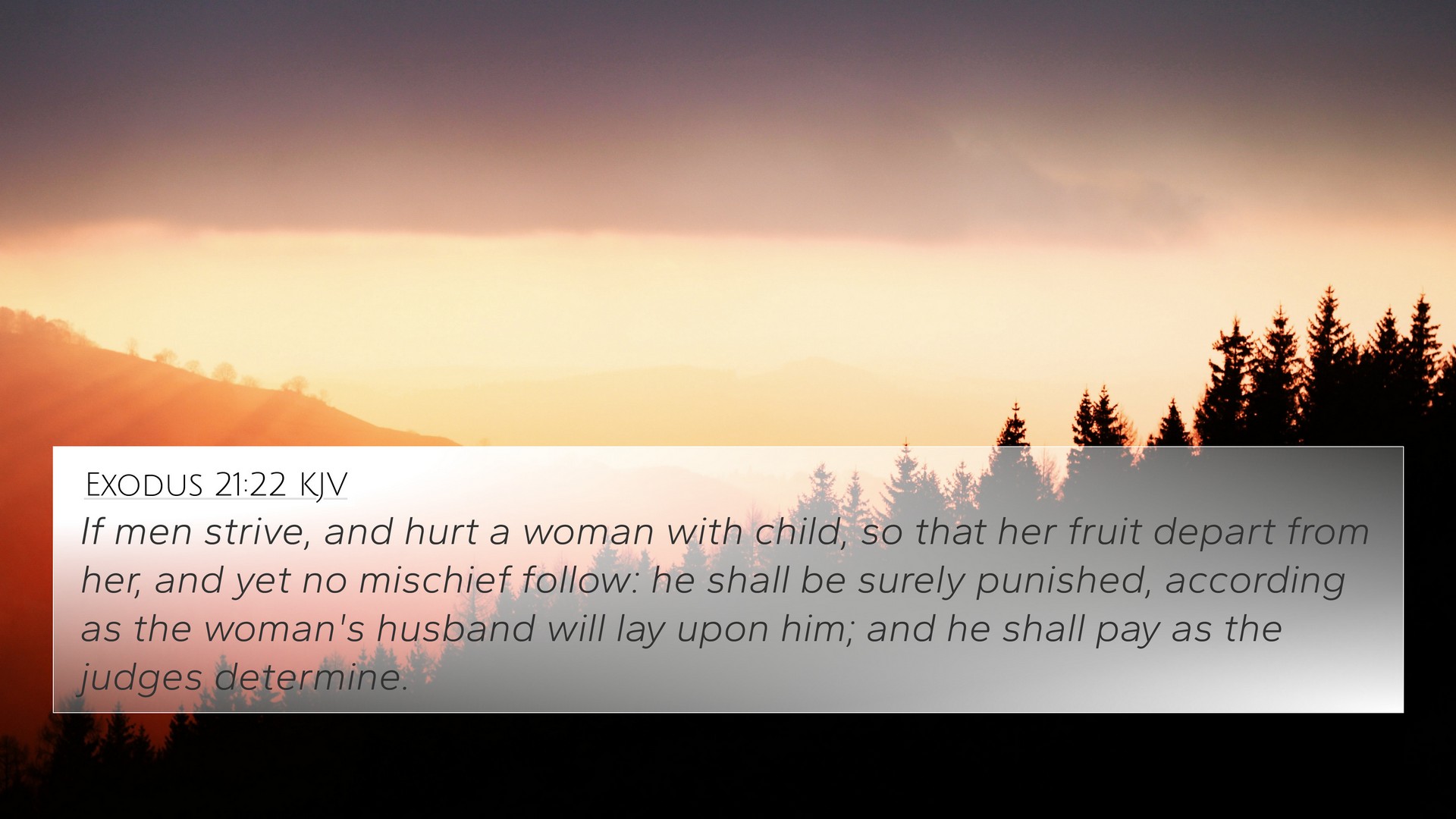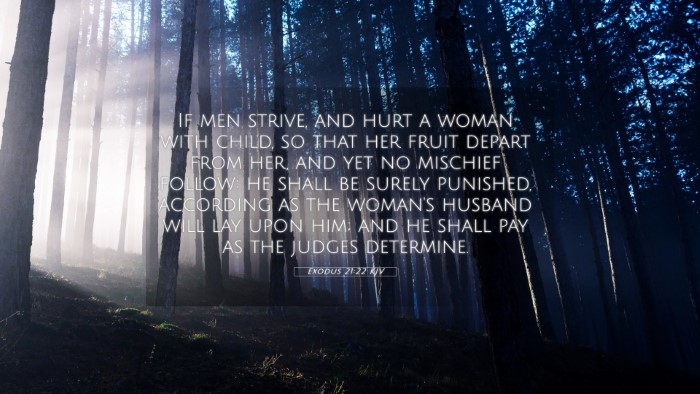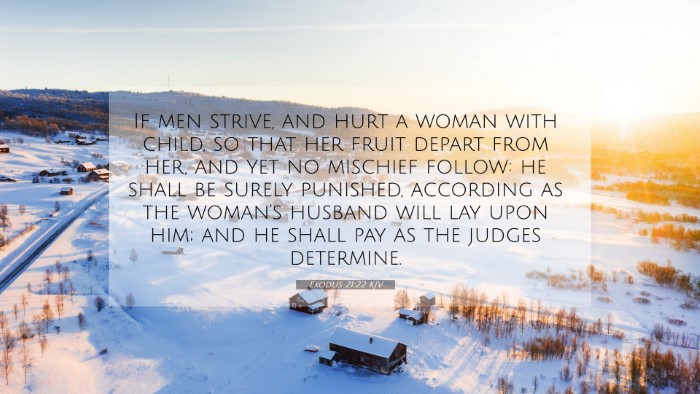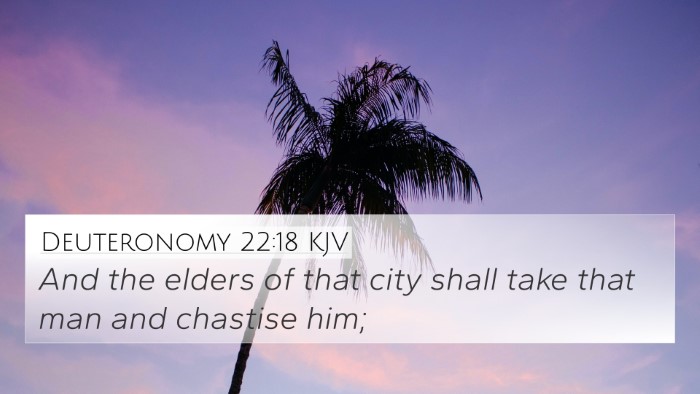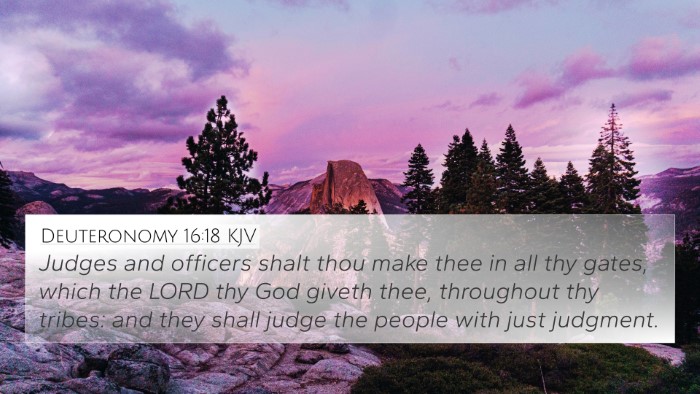Exodus 21:22 - Summary and Interpretation
Verse: "If men strive, and hurt a woman with child, so that her fruit depart from her, and yet no mischief follow: he shall be surely punished, according as the woman's husband will lay upon him; and he shall pay as the judges determine." (Exodus 21:22, KJV)
Meaning and Insights
The verse Exodus 21:22 addresses the consequences of physical altercations that adversely affect a pregnant woman and her child. It highlights the legal repercussions imposed on a man who causes harm to a woman with child due to a fight or disorderly conduct.
Contextual Understanding
- This verse occurs within a broader legal code provided in Exodus that outlines various civil and moral laws intended to establish justice in the community.
- Pregnancy is viewed with great respect and the unborn child's life is considered valuable, thus any harm inflicted brings severe consequences.
- The emphasis is on the intentions behind the actions, distinguishing between intentional and unintentional harm.
Commentary Insights
Matthew Henry's Commentary
Matthew Henry points out that this law reflects God's concern for the lives of both the mother and the child. He notes that while there is no direct penalty mentioned for all cases of harm, the severity of the punishment hinges on the consequences of the injury as determined by the woman’s husband and the judges.
Albert Barnes' Commentary
Albert Barnes emphasizes the need for accountability in communal disputes. He interprets the laws as a caution against violence and a clear illustration of justice that holds individuals responsible for their actions, particularly when those actions risk the welfare of others, especially vulnerable members of society like pregnant women.
Adam Clarke's Commentary
Adam Clarke highlights the importance of the unborn child, suggesting that the law reflects a heightened protection for life from conception. He underscores that this law is particularly aimed at deterring aggression and promoting responsibility among community members.
Thematic Connections and Cross References
Exodus 21:22 can be linked to several other Biblical passages that deal with themes of justice, accountability, and the sanctity of life. Below are key Bible verse cross-references that mirror the themes found in this verse:
- Genesis 9:6: "Whoso shed man's blood, by man shall his blood be shed; for in the image of God made he man." (Discusses the value of human life)
- Proverbs 6:16-17: "These six things doth the LORD hate: yea, seven are an abomination unto him: A proud look, a lying tongue, and hands that shed innocent blood." (Reflects God's view on just and unjust acts)
- Deuteronomy 19:21: "And thine eye shall not pity; but life shall go for life, eye for eye, tooth for tooth, hand for hand, foot for foot." (Encourages just retribution)
- Luke 1:41-44: "And it came to pass, that, when Elizabeth heard the salutation of Mary, the babe leaped in her womb; and Elizabeth was filled with the Holy Ghost." (Affirms the recognition of life in the womb)
- Jeremiah 1:5: "Before I formed thee in the belly I knew thee..." (Indicates God’s intimate knowledge of individuals from the womb)
- Numbers 35:30: "Whosoever killeth any person, the murderer shall be put to death..." (Emphasizes the seriousness of taking life)
- Psalm 139:13-16: "For thou hast possessed my reins: thou hast covered me in my mother's womb." (Celebrates God's creation of life)
Practical Considerations for Bible Study
Understanding Exodus 21:22 involves recognizing the importance of cross-referencing Biblical texts to discover deeper insights into God's law and moral expectations. Here are some tools for conducting a thorough cross-reference Bible study:
- Bible Concordance: Helps locate and compare verses quickly.
- Commentaries: Provide background and interpretation of verses.
- Bible cross-reference guides: Offer structured links between related scriptures.
- Study Bibles: Often include cross-referencing notes at the bottom of the pages.
- Online Tools: Many websites offer digital cross-reference systems for quick access.
Conclusion
The implications of Exodus 21:22 stress the sanctity of life and the necessity of justice in society. By embracing the inter-Biblical dialogue through scriptural cross-referencing, one can deepen their understanding of justice, accountability, and the protection of life as upheld in both the Old and New Testaments. This verse serves as an important reminder that God's laws are designed not only as regulations but also as reflections of His character and intentions for humanity.
Embarking on a study of this verse encourages believers to recognize the inherent connections within scripture, harnessing tools for Bible cross-referencing to enrich their understanding of the rich tapestry of God’s Word.
